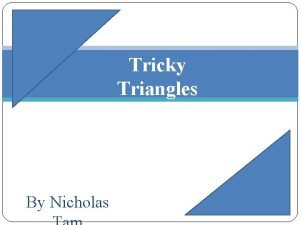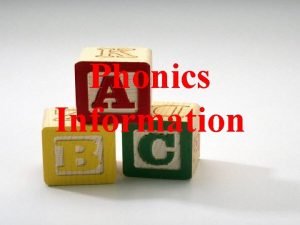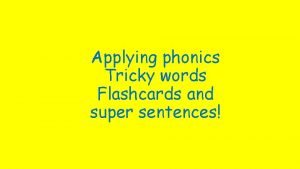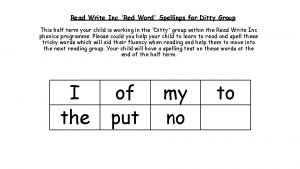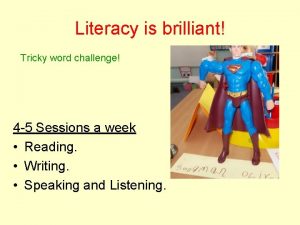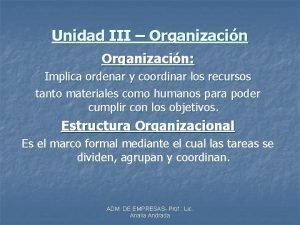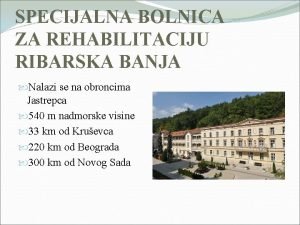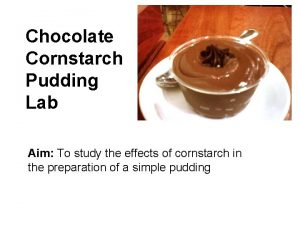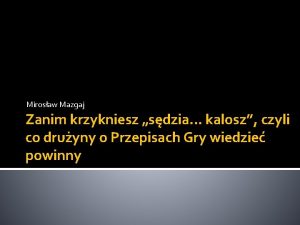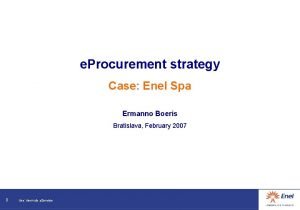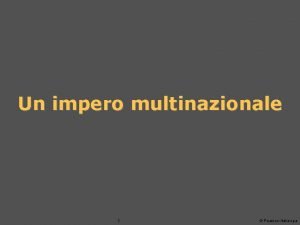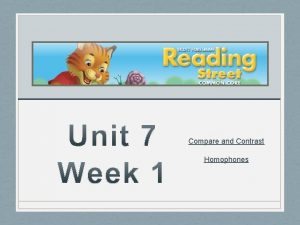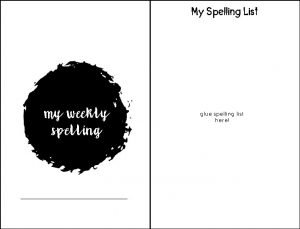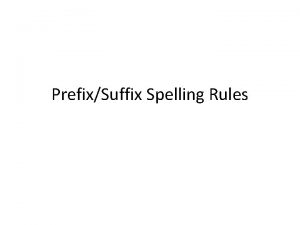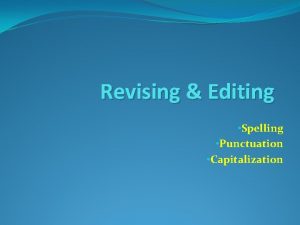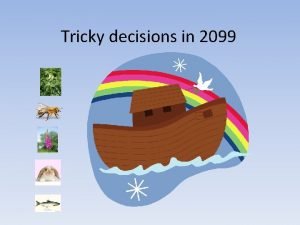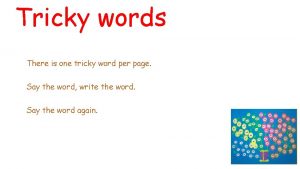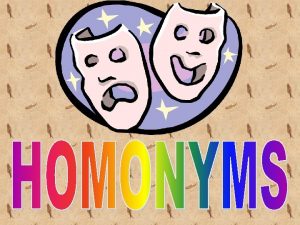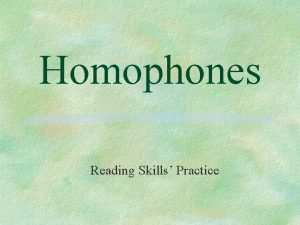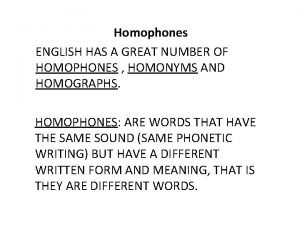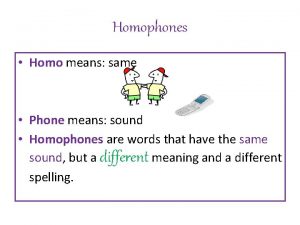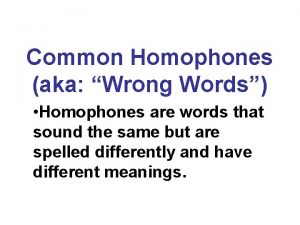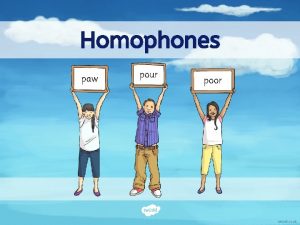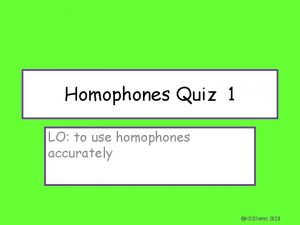SPa G Spelling Tricky Homophones and Near Homophones














































- Slides: 46


SPa. G

Spelling Tricky Homophones and Near Homophones

Homophones - who remembers what they are?

Let’s get the correct definition: Homophones are… A) words that have the same spelling and sound the same. B) words that sound exactly the same when pronounced. C) words that have the same meaning, or similar meanings. D) naming words.

Are you correct? Homophones are… A) words that have the same spelling and sound the same. B) words that sound exactly the same when pronounced. C) words that have the same meaning, or similar meanings. D) naming words.

Homophones (different words that sound exactly the same when pronounced) and near homophones (different words that sound almost the same when pronounced) can be really tricky to spell, because it can be tricky to remember which words needs which spelling. desert For e. g: dessert desert (verb: to abandon) Are there any homophones that you get confused with? Photos courtesy of Moyan_Brenan, Vidalia_11 and craigfinlay (@flickr. com) - granted under creative commons licence - attribution

Mini-Activity Can you match up the homophones / near homophones? Do you know what any of the words mean? Answers on the next slide!. further steal heard herd quite father steel quiet

Are you correct? further steal heard herd quite father steel quiet

Maths

LO: I can estimate different objects

Estimation is an educated guess. It is not a random guess! We need to use our previous maths knowledge to help us!

Estimating means we do not get the EXACT answer… but we get an answer that’s close to the actual Value! It is a rough answer!

If you have ever played the game ‘How many sweets in the jar? ’ Then you have estimated! On the next few slides, I am going to show some images…. You can view them for no longer than 10 SECONDS, then skip to the next slide which is a question mark to take your guess. It is not an EXACT amount, an ESTIMATE!



20



About 120



About 100



About 60



About 90



About 200



About 300

On the website, there is an estimating worksheet with some activities for you to complete! Have fun!

Literacy

Creative Writing


Welcome to the Ancient Crime Squad! ● ● ● This means you are going to be part of looking back in history and investigating ancient crimes that happened. The case you are about to investigate is whether or not Tutankhamen was killed. Your aim is to solve the mystery and write a clear explanation for the Ancient Crime Squad as to what happened. So, first thing is we need to look at some information to help us solve the case! Do you know anything about Ancient Egypt? Have you heard of Tutankhamen before? Who was he? Don’t worry if you have not heard of Tutankhamen… that’s what we will learn!

Who was Tutankhamen? What caused the death of the Ancient Egyptian pharaoh Tutankhamen at the age of 19? Read the evidence and then make up your mind about this history mystery!

Fact Ancient Egyptians called their kings Pharaohs.

A wooden figure of Tutankhamen


https: //www. bbc. co. u k/bitesize/clips/z 8 j 76 sg. Watch this video to see Tutankhamen come to life!

Your task: 1. Create a spider diagram/mind map showing 5 or 6 things you now know about Tutankhamen. 1. Complete the worksheet (it is on the website also), by matching the sentences to form facts! Remember, you can write these down rather than draw lines!
 Near homophones list
Near homophones list Near homophones
Near homophones Tricky dick: the rise and fall and rise of richard m. nixon
Tricky dick: the rise and fall and rise of richard m. nixon Tricky singular and plural nouns
Tricky singular and plural nouns Seahawks tackling drills
Seahawks tackling drills Tricky triangles
Tricky triangles Phase 5 tricky words
Phase 5 tricky words Tricky words with sentences
Tricky words with sentences Red words read write inc
Red words read write inc Wheel of misfortune game
Wheel of misfortune game Year 2 spelling words
Year 2 spelling words Tricky word challenge
Tricky word challenge Videos xxx
Videos xxx East carolina pool and spa
East carolina pool and spa Varna spa and wellness
Varna spa and wellness Bali relaxing resort and spa
Bali relaxing resort and spa Dolce salon and spa
Dolce salon and spa Lewis and clark vocabulary
Lewis and clark vocabulary Organigrama de un spa
Organigrama de un spa Peter zumthor bath
Peter zumthor bath Specijalna bolnica ribarska banja smestaj
Specijalna bolnica ribarska banja smestaj Spa tourism
Spa tourism Siemens scoot
Siemens scoot Radenci spa resort
Radenci spa resort Camhs referral surrey
Camhs referral surrey The pudding lab
The pudding lab Actividades centro deportivo siglo xxi zaragoza
Actividades centro deportivo siglo xxi zaragoza St hughs school woodhall spa
St hughs school woodhall spa Bath spa university security number
Bath spa university security number How does the galvanic body spa work
How does the galvanic body spa work Spa vs dpa
Spa vs dpa Autovie venete segnalazioni
Autovie venete segnalazioni Colmedic spa reclamos
Colmedic spa reclamos Promosi baby spa
Promosi baby spa Dogso i spa
Dogso i spa Spa philhealth
Spa philhealth Ageloc galvanic body trio
Ageloc galvanic body trio Spa objectives
Spa objectives Asas spa
Asas spa Spa i
Spa i Breech lock exchanger
Breech lock exchanger Leaseplan italia spa bolzano
Leaseplan italia spa bolzano Enel procurement
Enel procurement Oksiput duvar mesafesi
Oksiput duvar mesafesi Pearson italia spa
Pearson italia spa Uncg job search
Uncg job search Dsv ravenna
Dsv ravenna





